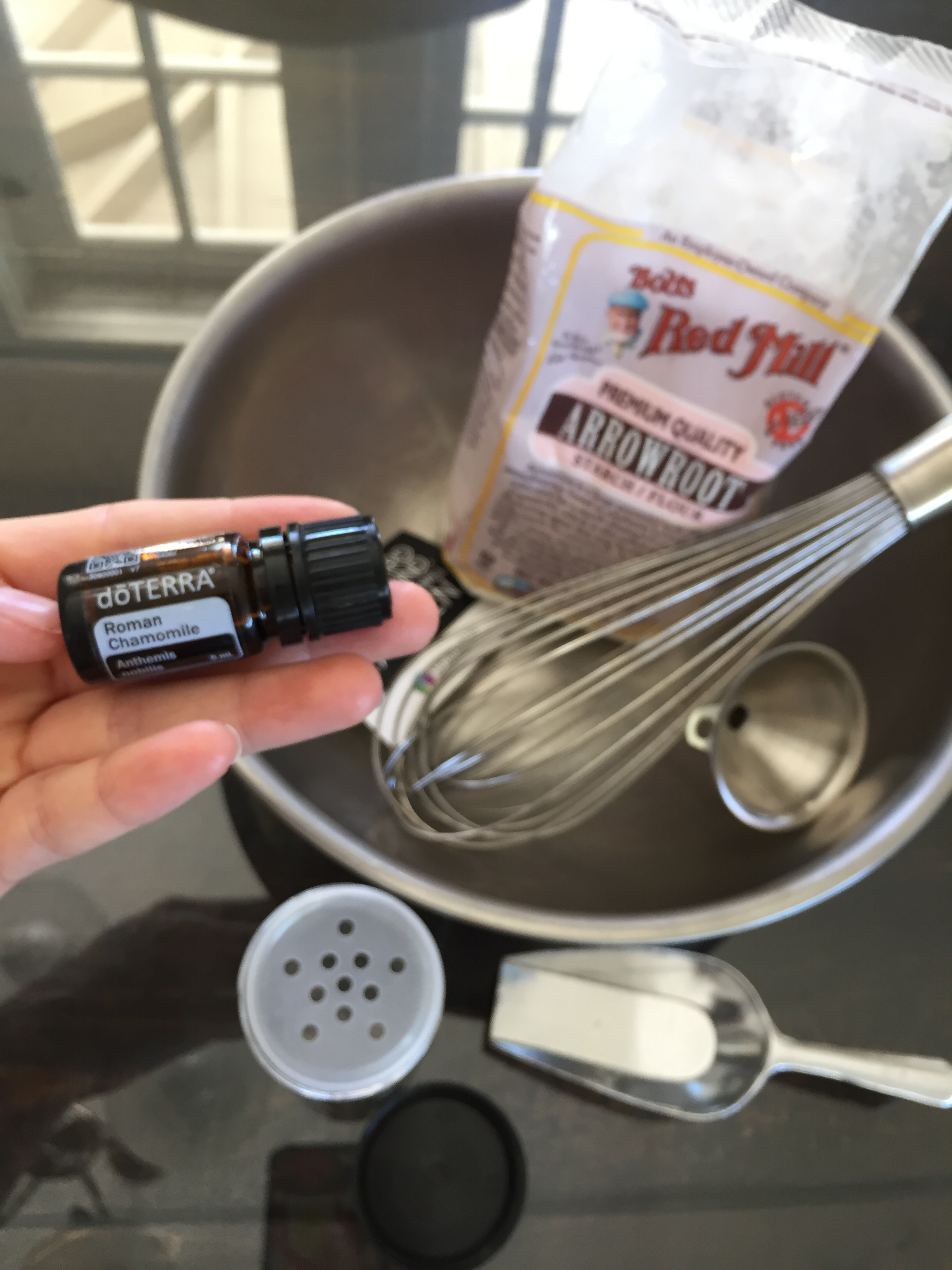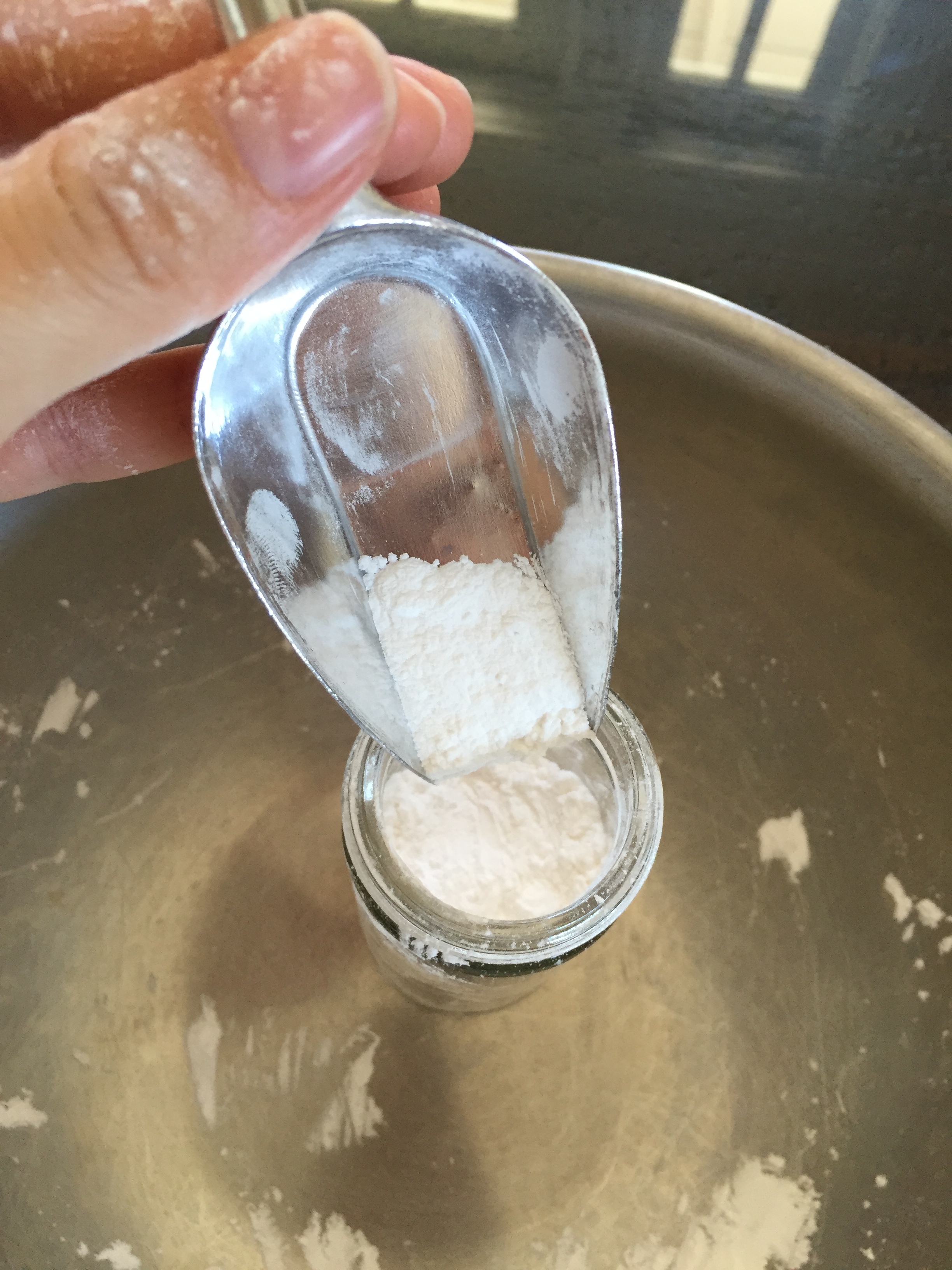Homemade Baby Powder
So, if you didn't know (cause I didn't when I was a new mom), most baby powders that are store bought have talc in it or additives that cause irritation or long term health issues ... Which drove me to try more expensive baby powders from more natural based brands. I love Honest & BurtsBees powders, I also loved hearing my aunties day how they used to use cornstarch or root powders from regular cooking shelves! I wanted to try it and mixed in essential oils from recipes I found from other mommies:
Arrowroot Starch: Similar to cornstarch (you can use cornstarch instead), it is a plant derived ground-up powder that is often used for thickening. It is also a gluten free choice and an egg substitute with a nice white color (why I like it over cornstarch). I bought the Bobs Red Mill brand from Wholefoods.
+
Roman Chamomile Essential Oil: Essential oils are the extracted essence of a plant, this one is a flower. Chamomile is one of a few popular BabySafe* (not all are) oils that are also soothing to skin. Chamomile is known to ease emotions and calm and ease stress of both body and mind so it's a common choice for baby products. Other common baby product choices are Lavender, Orange, and Ylang-Ylang. I use the Doterra Brand and sell at both retail and wholesale if you want (click here to browse products online)
I simply scooped a few spoons of ground arrowroot and dropped in a few drops of essential oil (2-5 drops for a 3 ounce is fine) and mixed with a whisk until the drops had evenly settled throughout powder. I then scooped powder into a shaker and tightened cap.
It's a finer texture then cornstarch so a little more shaking is what it takes sometimes but it works great!














